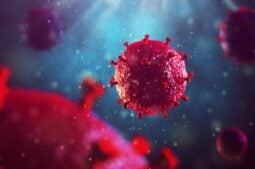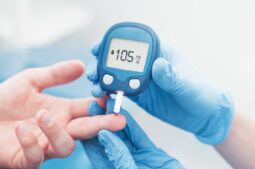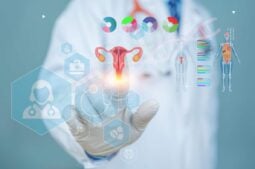
The idea that there is any difference between the left and right ovary might come as a surprise to some. After all, it would be understandable to assume that, since we have two ovaries, the work of producing a mature egg each month would be distributed equally between the left and right ovary. But then again, the human body is not entirely bilaterally symmetrical. We know that the left and right side of our faces are not exactly equal and opposite, our hearts are usually positioned towards the left, and even the way our hair grows is not always the same on both sides of our heads.
What does this asymmetry mean for our ovaries? Is there any difference between an egg resulting from left ovary ovulation compared with one that’s been ovulated from the right ovary? Do you ovulate on both sides every month, or do the ovaries take it in turns? We now know some of the answers to these questions, and what those answers could mean for fertility and assisted fertility treatments.
Ovulation occurs more frequently from the right ovary
Fertility practitioners have long known that there are physiological differences between the two ovaries, and that in general, ovulation occurs more frequently from the right than from the left ovary. A study published in the European Society of Human Reproduction and Embryology demonstrated that for both fertile and infertile women, 55% of all ovulations came from the right ovary, compared to 45% from the left ovary. Scientists are not completely clear at present on the reasons for this, but some could include:
- Venous drainage systems differ somewhat in the two ovaries. Although they both receive their blood supply directly from the aorta through ovarian arteries, venous drainage in the right ovary drains directly to the inferior vena cava, the large vein that carries deoxygenated blood from the lower and middle body back into the right atrium of the heart. The blood supply of the left ovary, however, drains initially to the left renal vein and from there it moves onwards to the inferior vena cava. This could be an underlying cause of the apparently higher rate of activity in the right ovary.
- The basic endocrine environment is the same in both ovaries, but some physiological differences control how the follicles grow and which ovary will be the one to ovulate in any cycle. Studies have suggested that the side which ovulates is determined by the length of the previous menstrual cycle. Formation of a dominant follicle, the one that will eventually become a mature egg and ovulated, is more likely in the ovary which has lower levels of progesterone during the follicular phase – that is, the phase that starts on day one of the menstrual cycle and culminates in ovulation. During this phase, Follicle Stimulating Hormone (FSH) produced by the pituitary gland prompts the development of several follicles, one of which will become the dominant one.
- Studies have further observed that ovulation tends to alternate between ovaries during short cycles but that during longer cycles, ovulation occurs randomly, making prediction difficult.
What is the impact of right ovary dominance on fertility?
As well as observing that right-sided ovulation occurs overall more frequently than on the left side, researchers have also made the startling discovery that oocytes ovulated from the right ovary have a small but statistically significant advantage in their fertility potential.
They have suggested that this higher fertility potential of oocytes ovulated from the right ovary could be a result of the action of the corpus luteum. This is the empty ‘case’ of the egg after it has emerged from its follicle, which becomes a temporary gland, secreting estradiol, and testosterone. For reasons not yet understood, it may be that in the right ovary, the output of these hormones by the corpus luteum is enhanced, making them more likely to be fertilized.
How fertility treatment has supported research
Without the advent of fertility treatments such as Artificial Insemination (AI) and especially In Vitro Fertilization (IVF), research on the comparative fertility potential of left or right-sided ovulation could not have been undertaken. In particular, the ability to compare success rates of fertilization, embryonic development, implantation, and successful pregnancy outcomes could not have happened without IVF. Scientists working in the field have undertaken extensive studies and, although the underlying reasons for the differences are not yet fully understood, their findings so far have been significant. For example, a study of nearly 800 patients undergoing IVF or IVF with ICSI published in the American Society for Reproductive Medicine found that:
- The number of follicles of over 10 mm in diameter on retrieval day was 6.5 (right ovary) vs. 6.1 (left ovary)
- Number of oocytes retrieved was 3.6 vs. 3.0
- Percentage of fertilization was 79.9% vs. 74.6%
- Mean number of mature oocytes was 2.3 vs. 1.8
- Mean number of grade 1 zygotes was 1.79 vs. 0.93
- Mean available number of top-quality embryos on transfer day was 1.39 vs. 0.73
All these results show that, although the contrasts are not very big, they all add up to the conclusion that there are statistically significant differences between the right and left ovarian responses in IVF patients with healthy ovaries.
IVI and research into fertility treatments
Advances made in the understanding of the differences between the right and left ovaries are just one example of how research and innovation can take forward our knowledge and successes in assisted reproduction. At IVI we are one of the global leaders in the field of reproductive medicine, and we are committed to sharing our knowledge through training programs at major universities and congresses. With seven research centers in addition to our world-wide treatment centers, we employ over 70 research investigators and have published over 1,900 research papers.
Contact IVI
If you’d like to know more about IVI, or talk to us about your own fertility journey, just get in touch using our online contact form. There’s a very good chance that we can help.





Comments are closed here.